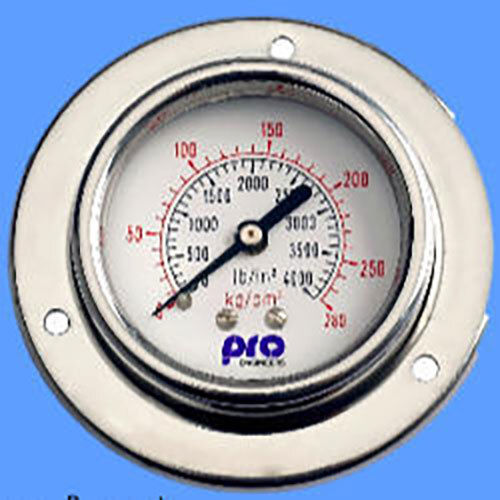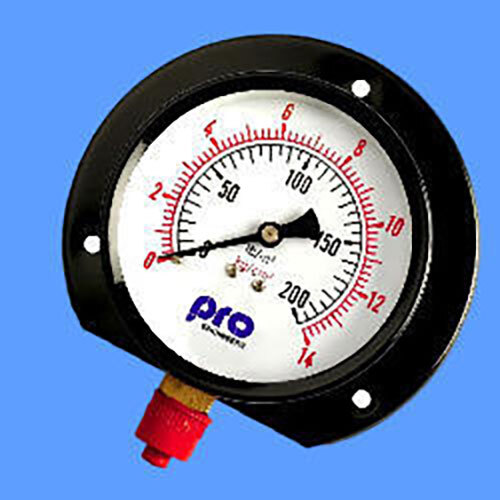Standard Pressure Gauge
Product Details:
- Display Analog
- Usage Pneumatic control systems, Air conditioners. Pump etc.
- Size 40, 50, 63, 100, 150, & 250 mm.
- Material Brass & S.S
- Product Type Standard Pressure Gauge
- Click to View more
X
Standard Pressure Gauge Price And Quantity
- 1 Piece
Standard Pressure Gauge Product Specifications
- Standard Pressure Gauge
- Analog
- 40, 50, 63, 100, 150, & 250 mm.
- Pneumatic control systems, Air conditioners. Pump etc.
- Brass & S.S
Standard Pressure Gauge Trade Information
- 7-10 Days
Product Description
Product Specification:
| Size | 40, 50, 63, 100, 150, & 250 mm. |
| Case & Bezel | Steel case Black finished. S.S-304 |
| Bourdon & Movement | Brass & S.S |
| Accuracy | ± 2% of FSD |
| Mounting | Bottom, Surface, Back, Panel |
| Ranges | Vacuum, 0.6 to 700 kg/Cm2 |
| Application | Pneumatic control systems, Air conditioners. Pump etc. |
Versatile Applications
Designed for use in pneumatic control systems, air conditioning units, and pumps, our standard pressure gauges are tailored for a wide spectrum of settings. Their robust construction and dependable accuracy make them suitable for both industrial and commercial environments.
Superior Build Quality
Each gauge is built using premium brass or stainless steel, ensuring excellent resistance to corrosion and extended service life. The analog display allows for easy and quick reading, bolstered by meticulous craftsmanship, making these gauges a reliable choice.
FAQs of Standard Pressure Gauge:
Q: How do I select the appropriate size for a standard pressure gauge for my application?
A: To choose the right size, consider the installation space and visibility requirements of your system. Smaller gauges (4063 mm) fit compact spaces, while larger gauges (100250 mm) offer better readability for distant or high-pressure applications.Q: What materials are used in these pressure gauges, and how do they benefit my setup?
A: Our pressure gauges are made from brass and stainless steel, providing superior resistance to wear, corrosion, and harsh environments. Selecting the right material ensures longevity and reliable performance in your specific operating conditions.Q: Where can standard pressure gauges be used most effectively?
A: These gauges are commonly applied in pneumatic control systems, air conditioning units, and pumps. Their robust construction allows them to withstand the demanding conditions prevalent in such systems across industrial and commercial sectors.Q: What is the process to install these gauges in a pneumatic system?
A: Installation typically involves threading or flanging the gauge onto the pressure line or equipment port. Ensure compatibility with connection types and sizes, tighten securely, and check for pressure leaks after installation.Q: When should a pressure gauge be serviced or replaced?
A: Routine checks should be conducted as part of preventive maintenance schedules. Replace or service the gauge if you notice inaccurate readings, physical damage, or after prolonged exposure to harsh conditions to maintain optimal performance.Q: How does the analog display facilitate system monitoring?
A: The analog display provides immediate and clear visualization of pressure levels, allowing operators to monitor and adjust system parameters swiftly. This enhances safety and operational efficiency in real-time environments.Tell us about your requirement

Price:
Quantity
Select Unit
- 50
- 100
- 200
- 250
- 500
- 1000+
Additional detail
Mobile number
Email
 English
English Spanish
Spanish French
French German
German Italian
Italian Chinese (Simplified)
Chinese (Simplified) Japanese
Japanese Korean
Korean Arabic
Arabic Portuguese
Portuguese





